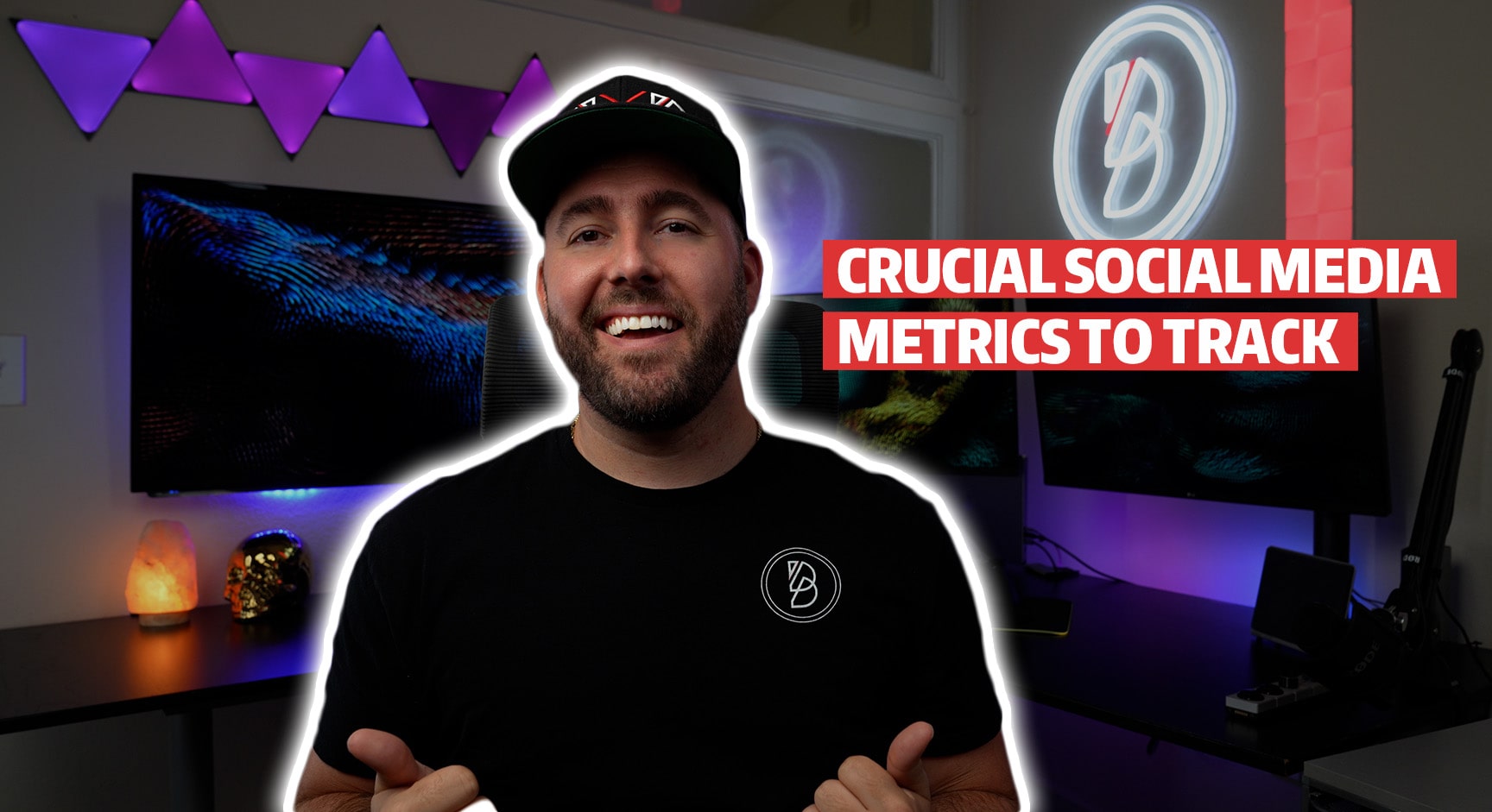Nowadays, every business needs to use social media to be successful. Not just because social media channels are a great way to market products and services but also because they allow you to track a number of metrics.
By tracking metrics, you get to know your customer better and understand what they want and need. This allows you to optimize your sales and marketing where necessary.
As a result, you will improve your customer experience, which will reflect in your sales and bottom line and, ultimately, benefits your business overall.
What are social media metrics?
Social media metrics provide you with valuable insight into how your social media strategy is performing. They help you understand how many people see your content, how much money you earn from social media, and much more.
In short: social media metrics are essential for growth, optimizing your business, and making better decisions.
Why is tracking social media metrics so important?
Since social media metrics let you know which of your strategies are working, they can also tell you where you need to improve. Knowing which efforts are paying off and tracking how much money you’re spending and how much you get in return can help you make better business decisions in the future.
Metrics are essential to connecting business goals to social media efforts and creating an informed strategy. They allow you to spot trends that may impact how you progress in different parts of your business.
Tracking different metrics is both beneficial and challenging. Knowing which metrics matter to your success is key to effective social media management and measurement.
Depending on your goals, budget, and size of your team, you can choose a number of metrics to track.
Learn which ones are the most important ones below!
What Data Metrics Are Important for Social Media in 2022?
Awareness Metrics
Awareness metrics let you know how many people see your content and as how well your brand is performing on social media. There are a number of awareness metrics, including:
Reach
Reach refers to the number of people who see your content. You’ll want to monitor both your individual reach (of each post, image, video, and story), as well as your average reach. When you track your average reach, look at how many followers vs. non-followers see your content.
If you notice a high percentage of non-followers seeing your content, it indicates that your posts are being shared or that they perform well in the algorithms or both.
Impressions
This is the number of times people saw your content. When several people view your content more than once, this number will be higher than the reach. If impressions are considerably higher than reach, that means that the content you share is really interesting to them.
Try to find out why that is as it means your posts are valuable to your viewers and they will want to see more of them.
Audience Growth Rate
The audience growth rate indicates the number of new followers you gain on social media within a certain time period. However, don’t mistake this as a simple count of new followers.
The audience growth rate is a percentage of new followers against your total audience. That means that when you are just starting out with a few followers, your growth rate will be high.
Once your total follower number grows, you need to continually attract new followers to keep that momentum going.
You can easily calculate your audience growth rate by tracking your net new followers (on each platform) over a specific time period.
Divide that number by your total audience (on each platform) and multiply it by 100 to get your audience growth rate percentage.
You can do the same with your competitors’ progress to compare and benchmark your performance.
Engagement Metrics
Social media engagement metrics refer to the number of people that interact with what you post instead of just seeing it. The following are the engagement metrics:
Engagement Rate
The engagement rate measures how many engagements, including comments, reactions, and shares, your content receives as a percentage of your audience. You can calculate your engagement in relation to your overall number of followers.
However, due to algorithms, not all your followers will see each of your posts.
You may also get engagement from non-followers. That means there are several ways to calculate engagement, and you’ll have to try out a few different ways to figure out what works best for you and your business.
Amplification Rate
The amplification rate describes the ratio of shares per post relative to the number of overall followers. It shows you when your followers care enough about your content to share it.
Because this can expand your reach, you’ll want to aim for a high amplification rate.
You can calculate it by dividing the total number of shares of a post by your total number of followers, multiplied by 100.
The percentage you get is your amplification rate.
Virality Rate
Just like the amplification rate, the virality rate shows how much your content is shared. The difference is that the virality rate measures shares as a percentage of impressions instead of a percentage of followers.
Every single time your content is shared, it reaches a new audience member, achieving a fresh set of impressions.
Basically, the virality rate calculates how your content spreads exponentially.
To calculate virality rate, simply divide a post’s number of shares by its impressions, then multiply it by 100 to get a percentage which is your virality rate.
ROI metrics
You may have thought that it’s not possible to calculate the return on your social investment? But with these metrics, it is! Check them out:
Click-Through Rate (CTR)
The click-through rate (CTR) shows how often people click a link within your post to access additional content. That includes blog posts, your online store, or other parts of your website.
CTR indicates how many people saw your social content and wanted to find out more. That means it can tell you how well your social content is performing and whether it promotes your products and services successfully.
Simply divide the total number of clicks for a post by the total number of impressions and multiply this by 100 to get your CTR as a percentage.
Please note that this refers to paid social ads instead of organic content.
Conversion Rate
The conversion rate is one of the most important metrics as it calculates how often your social content initiates a conversion event like a download, subscription, or sale.
It basically demonstrates the value of your social content as a means of feeding your funnel.
UTM parameters, which are short pieces of code that you can add to links (like the ones you share in your social posts), can help you track the post’s performance, including its clicks and traffic.
These parameters are essential.
With UTMs in place, calculate your conversion rate by dividing the number of conversions by the number of visitors. You can use the conversion rate in eCommerce, for example, to see how your posts help boost your sales.
Cost-Per-Click (CPC)
Cost-per-click, or CPC, refers to the amount you pay per individual click on a social ad. It helps you put this in context when you know the average order value or the lifetime value of a customer.
That, combined with a high conversion rate, lets you know that you can afford to spend more per click to attract visitors to your website.
CPC doesn’t have to be calculated, as it can be found in the analytics section of the social media channel where you run an ad.
Cost Per Thousand Impressions (CPM)
Cost per thousand impressions, or CPM, describes the cost you pay for every thousand impressions of your social media ad.
Rather than measuring action, CPM measures views. You don’t need to calculate CPM either, as you can find this number in your social media channel’s analytics section.
Final Thoughts
Simply maintaining social media accounts isn’t enough. You have to track several metrics to make the most of your digital presence. By tracking the most important ones, you ensure that you know your customer, their changing wants and needs, and respond to them accordingly.
With this information, you can optimize your website, marketing, products, services, and business as a whole to serve them in the best way possible.
As a result, you’ll enjoy better sales and profits and experience more sustainable growth overall.

